maanantai, 3. syyskuu 2012
Missing pictures
perjantai, 1. kesäkuu 2012
Cusco and Macchu Pichu
Cusco is a beautiful city with an interesting history, but there are just too many tourists. Local people are trying to take advantage of a tourism which is very important for their economy and by any means they have a right to earn their living, but eventually you get very tired of all those people trying to sell you their products and inviting you to eat in their restaurants. The center is full of restaurants and travel agencies with very variable prices.
The area of Cusco and the sacred valley nearby are full of ruins of the temples from the times of Inkas. To visit them you ndeed to purchase a tourist ticket for 130 soles (50$) or pay 40 soles for a single entry. The tours that take you to the ruins aren’t that expensive and they are fastest way to do it. The guides were knowledgeable and the service was good. They even waited for me when I got lost in one of the ruins.
After two days of sightseeing it was time to do the Salkantay trek for five days. Inka trail is the best and the most popular trek, but it’s expensive and has to be booked at least three months in advance. Salkantay you can book just two days before the departure eventhough it’s getting very popular too. In five days you walk aslmost 100 kilometers in the varying landscapes from the mountains to jungle. The hardest climb is the Salkantay pass climbing from 3600m to 4600m.
We started in the first from Cusco at 5.30 a.m after waiting one hour for no reason. After two hours ride we started trekking 4 km from the actual starting point due to late start (????). I was put to a same group with 5 Canadians who knew each other. Some of them problems with climbing the steep hills. I thought it was told very clearly that this is not an easiest trek and there is lot of climbing and downhills. along the way. We stopped many times and waited for them patiently. Besides the guide we had two chefs and and one horseman with us taking care of our food and camping and cooking gear. The meals eaten in the nature were actually very good and we got some coffee too.
Th e first night we spent near Salkantay mountain in 3600m. It was windy and cold. Luckily our tents were under the roof and we had enough clothes and warm sleeping bags. Next morning we started the climb to Salkantay pass which was the highest point of the trek. The climb was tough, but I enjoyed it and the beautiful scenery. Nobody has ever managed to climb the actual mountain (6200m) though. In the afternoon we were descending quickly until the edge of the jungle in the rain. We walked more than 20 km that day in changing conditions. I almost lost my sense of humor in the rain waiting for the slowest of the group. The one of the girls was clever and hired the mule for first climb, but the rest of the day she had to walk also. The rainy night we spent camping in the backyard of one local family. Everybody was tired after long day and hit the sack after dinner.
The third day we walked just in the morning and enjoyed the fresh jungle after the rain. In the afternoon we camped on the campsite near one village known of its thermal baths. All the natural pools were full of people. One of them was actually very hot. One German decided to ruin his trek by diving to a pool with one meter of water. Luckily the first aid clinic was near and he got six stiches to his leg, but he had to finish the trek by car. In the evening we had campfire with disco lights and loud music, a very natural experience indeed. I went to my tent quite early after drinking few beers, but I guess that some of the trekkers partied until morning.
The fourth day was the most boring. We walked on the road and along the railroad to Aquas Calientes, one of the most touristic places on this planet. A small village is full of hotels, restaurants, massage places and people offering these services on the streets. Without the presence of the famous mountain nobody would know this village. After the four days of walking it was nice to have a hot shower in the hostel and eat in the restaurant.
The last day we started by climbing the steep stairs to the entrance of Macchu Pichu. For me it took one hour, but for the slowest of the group half an hour more. The line was already long when they opened gates at 6 a.m. We could finally start our guided tour after 7. Nevertheless the ruins were quite impressive and it was interesting to listen to the history of the Inka empire and building of the city. Suddenly the sky cleared up and we had beautiful views over the ruins and the surrounding mountains. I couldn’t get the permission to climb Huayna Pichu mountain before the trek in Cusco, because 400 tickets were already sold for that day. It would have been a steep climb for one hour rewarded by beautiful views over the ruins. I climbed the sungate, end of the Inka trail, instead. After spending six hours on the ruins I decided leave in the early afternoon. It would have been possible to take the bus down to the village for 9 dollars, but I decided to enjoy the steep stairs once more. I was pretty tired when I finally got down, but there was still many hours to spend before the departure of the train. After sending the postcards, eating a bad meal, drinking few beers and enjoying the hostel’s coach in the candle light, the electricity went off for few hours, we could finally catch our train leaving at 9.30 p.m. All the transportation to Macchu Pichu is very expensive, but luckily all the tickets were included in the price of the trek. We were picked up by the minivan of the agency from the last station. Finally we arrived in Cusco after midnight. The trek wasn’t perfect, but it was definitely worth the money and good way to visit one of the seventh wonders of the world.

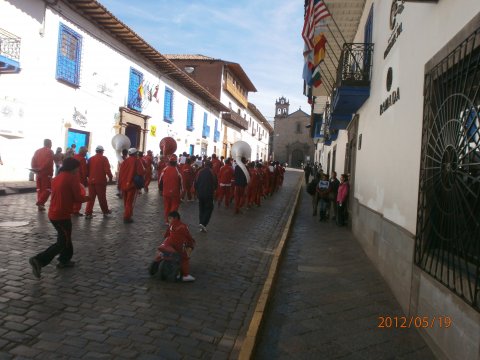
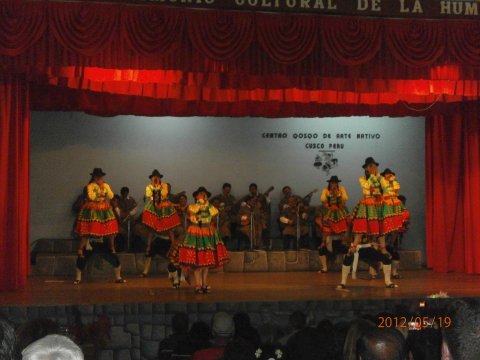
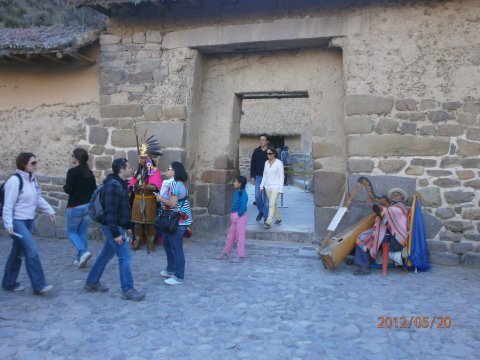
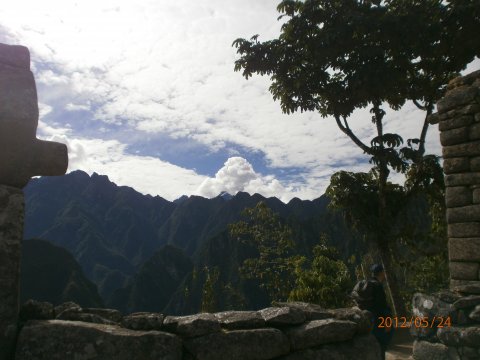
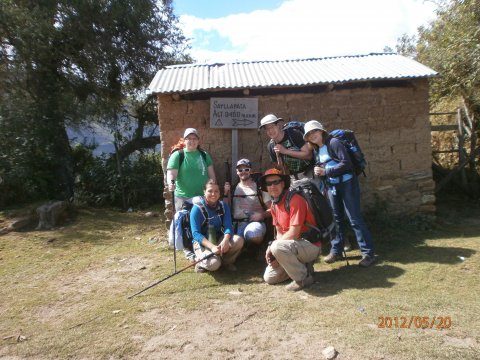
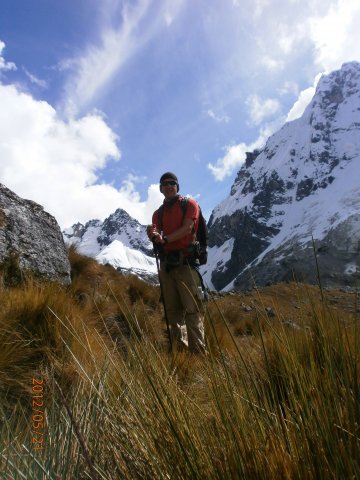
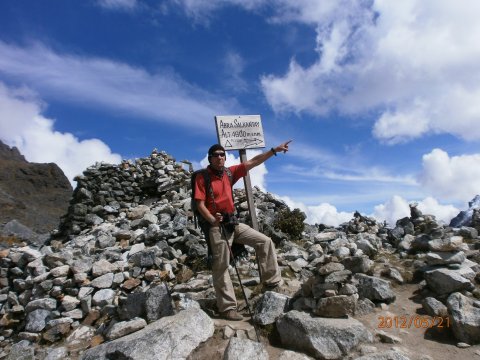
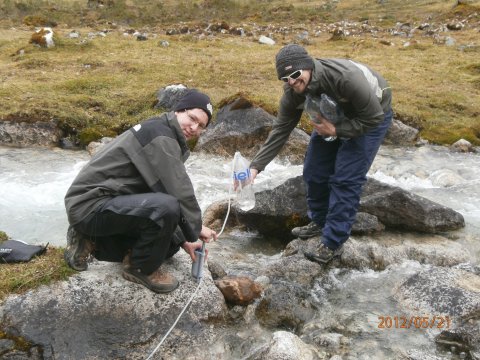
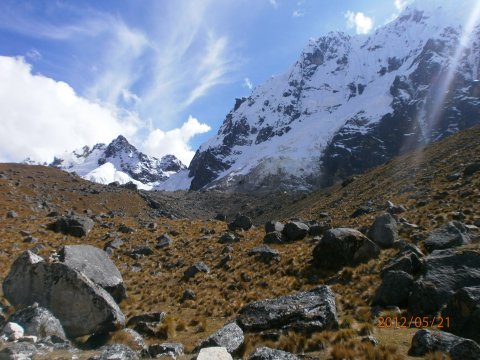
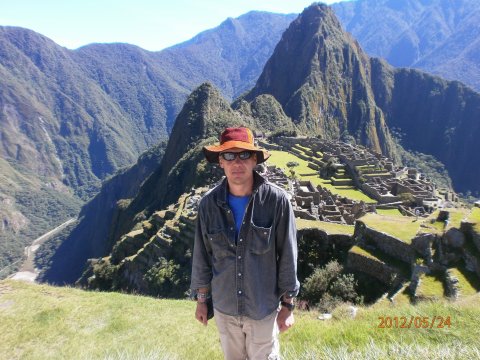
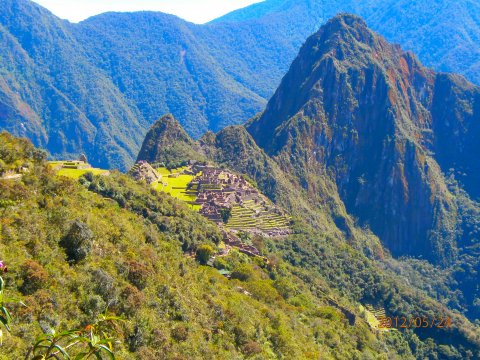
keskiviikko, 16. toukokuu 2012
Rurrenabaque
I Decided to finish my trip to Bolivia by visiting Rurrenabaque in the department of Beni. The town is famous of it`s beatuful surroundings and ecotourism. I decided to fly there from La Paz, because the journey by bus would have taken at least 18 hours on a bad road. In La Paz I had to go the airport at 4 a.m, because it wouldn`t have been possible later due to strikes and blockades on the roads. At the airpot I suddenly heard somebody speaking a stange language that I understood. It was quite weird to meet the first Finnish people for 8 months.
My first trip in Rurre was to a jungle located in Madidi national park where all the flora and fauna is protected by a law. Local communities are also having different kind of conservation and ecotourism projects. Nevertheless I decided to do my trip with a commercial agency mainly because of the cheap price. They also practise the responsible tourism, because their customers have to pay an entrance fee (14€) to a park and respect the immunity of the nature. We stayed in a resort located 2 hours (by boat) upriver from Rurre. Every day we did walks to a surrounding jungle where our guide explained us about the animals and plants in Spanish which I tried to translate to a rest of the group. As a native he knew lot of intresting facts about the animals and plants. The jungle is a fascinating and exciting enviroment, because of the unpredictable behavior of the animals (you never know what you going to see) and the interesting features of the plants and the trees (some of them are extremely poisonous and some serve as mecicine or drugs). During our stay we saw a cabiwara, wild pigs, parrots, spiders, frogs, some interesting insect and the footprints of jaguar (I wouldn't like to meet this guy in a forest). In the last day the girls from Israel wanted dress up like indians which was fine to our guide. We also did some handicrafts from natural materials.
The next trip was to Pampas, the lowest area of Bolivia. There you can basically sit on the boat watching abundant wildlife on the riverbanks of Yacuma. The nature is still quite intact due to difficult access to area. It is guaranteed to see lot of birds, reptails and mammals. We were lucky to have a small group, a knowlegeable guide, good cook and a quiet accommodation by the river. In the group of four people there were two Finnis people, which is very uncommon. After a rivertrip for three hours we went to watch the sunset to a resort that wasn't as nice as ours with much more people staying there. On a way back our guide explained us about the stars above us.
The next day we went to spot for the Anacondas, but we couldn't see any. It was interesting to walk on a swamp and listening to our guide explaining about the big snakes and the fire that killed most of them. In the afterniin it was time to fist the Piranjas. It turned out to be more of a Piranja feeding and I could catch only one small fish. Our guide caught few, but it wasn't enough for a dinner.
After going back on a third day we swam in the river with pink dolphins. The swimmin is safe, because the dolphins keep away all the nasty creatures ahich would otherwise eat you alive. They are actually very friendly and want to play with people. Those who got touched said that they are slimy like fishes in general. On the afternoon we had to leave our lodge and go back by boat to a nearest village. It was raining more or less the whole day and of course we got wet in the boat without the roof. Luckily the trip took only one hour, because we didn't for animal spotting anymore.
On our way back to Rurrenabaque there was total chaos on the road ("highway to Brazil"). One day of rain had made the road totally muddy. Lot of trucks and busses had got stucked and there was no passing. Luckily our driver was very experienced and used to drive in this kind of conditions. He could pass the trucks driving through the fiield beside the road. In order to make it possible we had to get off the car and walk on the muddy road. We made it to Rurre on a same day, but I wonder how long did it take to dig the trucks and busses out of the mud.

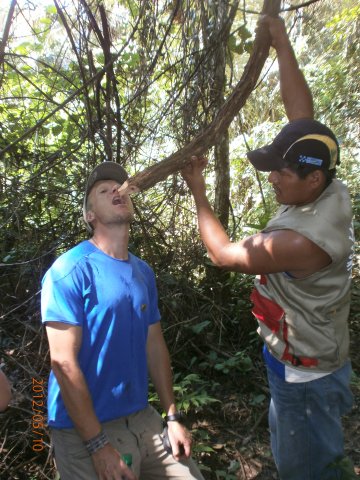
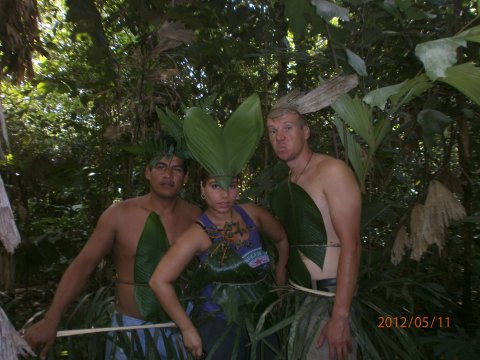
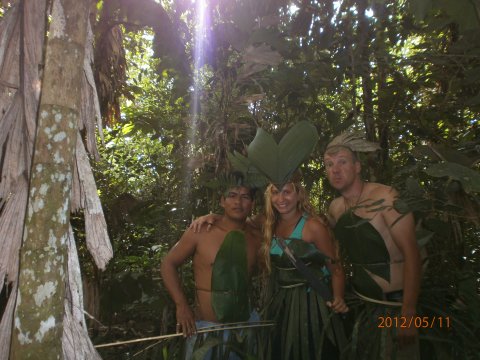
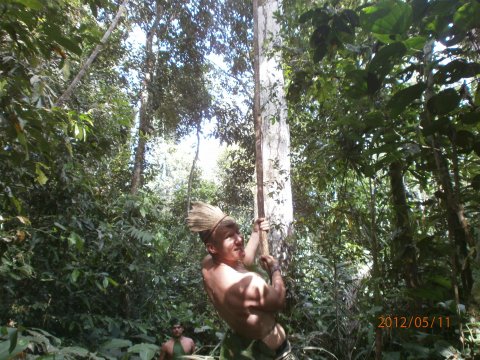
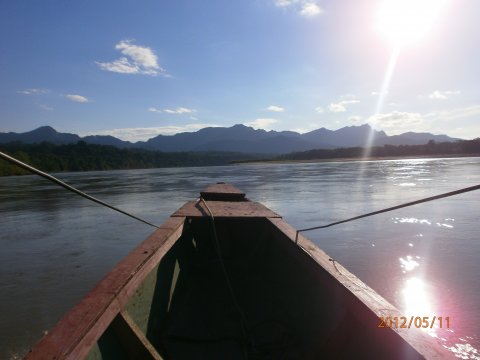
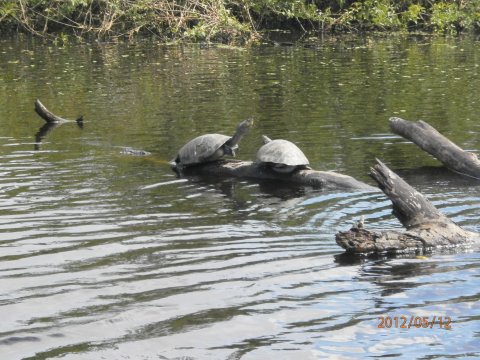
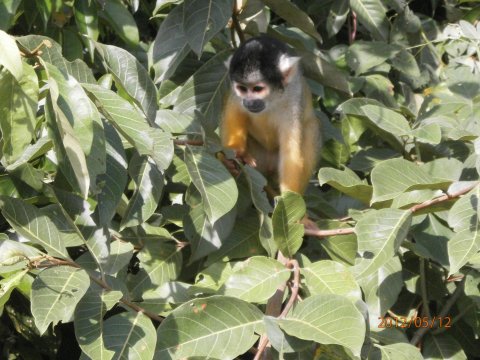
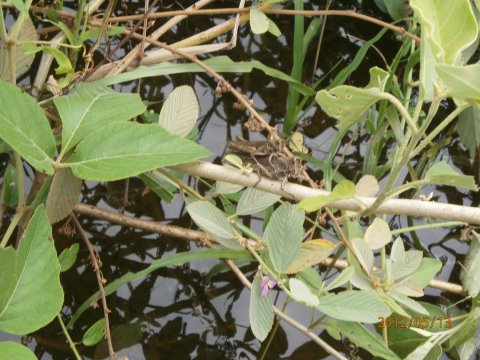
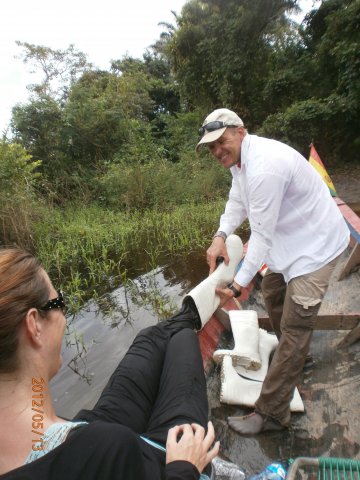
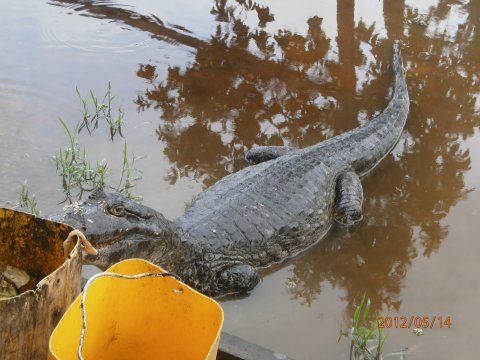
keskiviikko, 9. toukokuu 2012
Huayna Potosi
n La Paz I decided to fulfill my dream of reaching a 6000 m mountain peak and signed in to a very popular tour of climbing the Huayna Potosi (6088 m). It is not a technical climb, but it requires a good reparation and acclimatization. After being some time at least 2500 m above the sealevel I was ready to try it.
In the first day we were transported by a car to the base camp (4700m) and spent a day there by practising the use of crampons, ax and the other gear on a glacier. We also did some iceclimbing on the icewall. That was fun, but hard for the hands. The next morning we had to climb to a high camp (5200 m) carrying all the gear in a backpack. It took us only two hours and the afternoon was free for enjoying the amazing scenery and sleeping. After the dinner at 6 p.m it was time to sleep again. Surprisingly almost everybody could sleep that early, because it was dark and quiet.
The wake up call came at midnight. It was time to get ready for the long climb to a peak. I put all the clothes on that I had, but realised soon that it was too much and had to took the first jacket off. The atmosphere was mellow and the climb didn't feel too difficult. Of course we walked slowly, because the lack of air. The full moon was illuminating the beautiful landscape as we ascended. Every guide took care of two climbers. I was hanging on the same rope with one Swedish girl. She had to stop every now and then to get some extra air, but I was feeling fine most of the time.
At 6.00 a.m after five hours of climbing we reached 6000 meters. The last climb to the actual peak was scary and difficult. The path was very narrow and there was a deep fall (steep wall) on both sides. I don`t remember being so afraid never in my life. I thought to myself: Why are we doing this? For fun? To test our limits? Nevertheless we reached the top slowly, but surely. Then we had half an hour to enjoy the sunrise and the amazing views which really were worth the effort. No pain no gain :) Of course we had to ascend the same way very carefully and avoid falling down. After that we could descend quite fast eventhough I was already very tired and my legs hurt, because of the long climb. It got also hot due to a strong sun. After two hours we got back to a high camp and had a light breakfast and some rest for one hour. After that we still had to carry our gear to a basecamp. At noon I was very tired after being awake for 12 hours and walking for 9 hours. We had to finnish the long day with an urban trek on the highway to La Paz, because our driver couldn't drive the minivan to a center due to blockeades and demonstrations. Ten people of sixteen could make it to the top that night. I can be thankful for my achievement to coca leaves, altitude pills and good acclimatization.
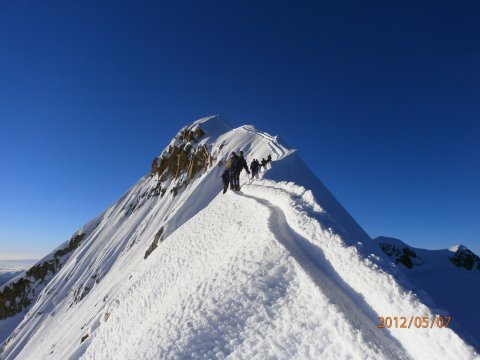
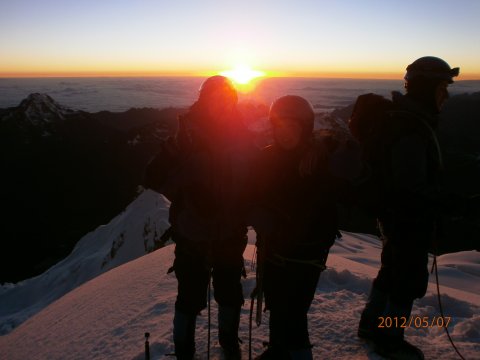
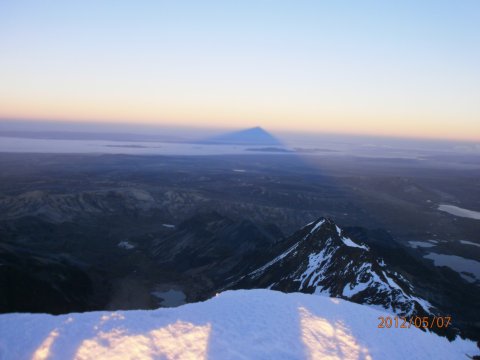
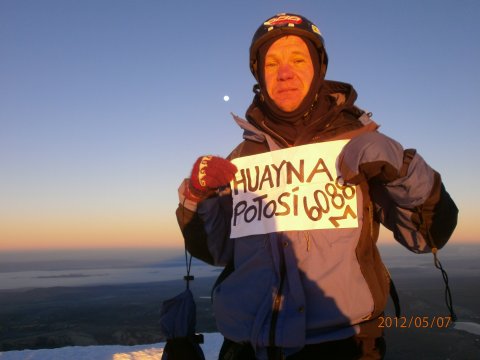
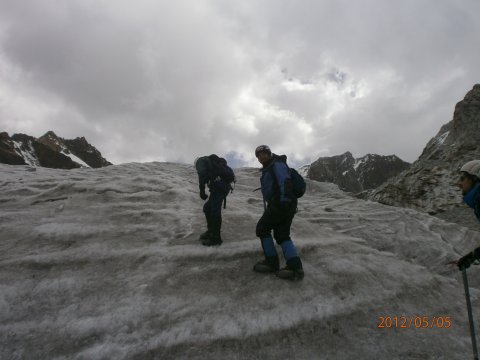
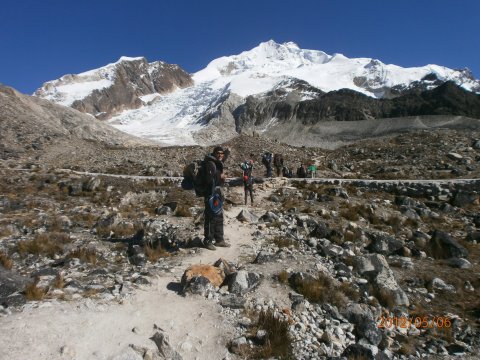
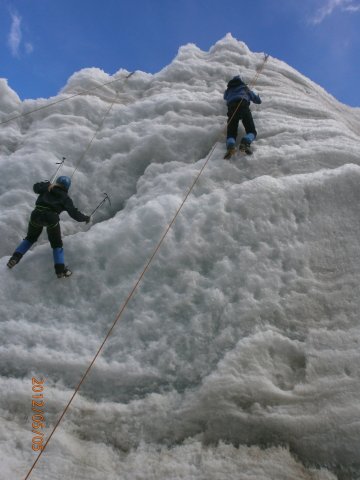
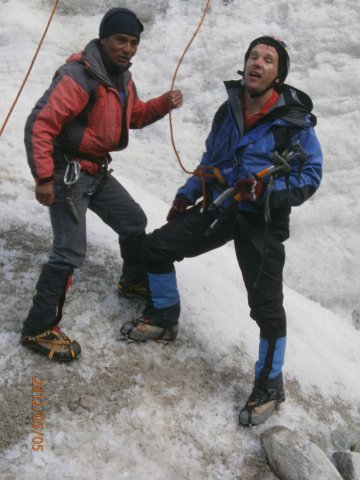
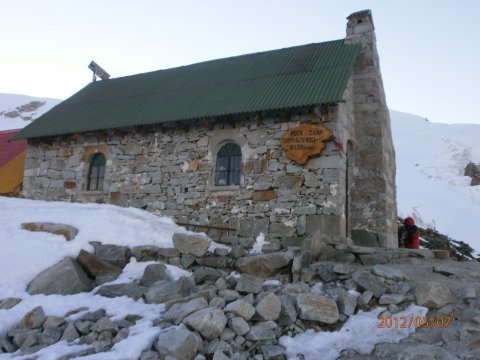 I
I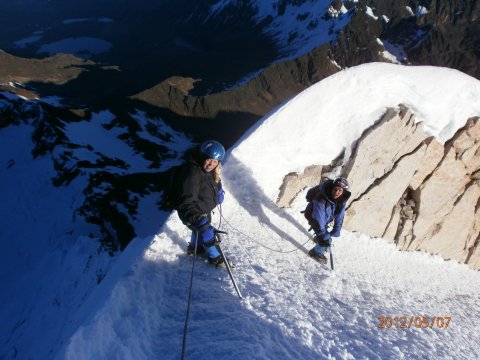
keskiviikko, 2. toukokuu 2012
Indipendencia
After seeing most of the Bolivian cities I wanted to experience a bit of rural life. I was recommended to visit the project called Independencia in the town of Independencia. I wasn’t really interested in weaving, but more in getting of the beaten path and experiencing the Quechuan culture and the way of life. Here are some parts of my diary.
The description of the project is on the webpage of Sustainable Bolivia : www.sustainablebolivia.org/projectindependencia.thml?l=en.
Dorinda's blog: pazabolivia.org
13.4 After going out in Cochabamba with other volunteers I had one hour to arrange my things and get the 5.30 a.m bus. The taxidrivers went on strike at 4.00 a.m so I couldn’t call a cab. Luckily I could catch one from the street. It drove me to a dodgy area from where the bus to Independencia was supposed to leave. There was no bus so we had to take a trufi (minivan) to Quillacollo to catch a bus from there. It took us more than an hour to find our way there, because of all the blockades (the Bolivian way to demonstrate). After a weird drive we could finally catch the right bus. Indipendencia is located on the eastern Andean range (cordillera) just 220 km from Cochabamba. Normally the trip takes 7-8 hours because of the unpaved and winding roads. Because of the roadworks I could enjoy the bumpy ride for 9 hours. After a long night without sleeping and 11 hours of traveling I was quite tired and out of this world. Dorinda came to pick me up and we climbed the steep streets to her house located above the village of Independencia.
14.4 I slept very well after a long day of traveling. Saturday was a day of dye workshop. After loading all the things we climbed on the bed of the truck and traveled to a countryside (campo). The participants were local indigenous women (cholitas) of the community called Chuñavi. The life of the local women is busy and hard. They raise their numerous children, take care of their sheeps and cows, cook and do all the other household work. After all this they try to earn some money by doing the handicrafts for sale. The idea of the workshops is to give them a change to dye the threads they produce from the sheep wool and to develop their skills of dying. After all the introductions it was time to work. First the leaves were taken off from the branches and boiled for an hour in the big pots. This was actually the only part where I could help. Most of the time I just watched and tried to learn something.The other parts of the project are shown below.

First the leaves were boilt for one hour. The green leaves where too fresh and din’t
give the good color so the women had to go quickly to pick up some
branches of Chilka (yellow flower) which luckily worked well.

The chemical reaction with salt (of aluminium) gave the mixture a different color
depending on the leaves used.

The mixture of yellow flowers (Suyku) and red liquid (Cochi) was very efective.

Suyku gave the thread a nice yellow color. Chilka is boiling in the other pot.

Ready for weaving.

Different kind of potatoes for lunch.

In the evening boys from the neighbour came to ask for a help with their math homework. It seems that also here the teachers like to limit the free time of the kids by giving them lot of homework. After doing the homework I sent the kids home at 7 p.m, but asked them to come back tomorrow.
15.4 The boys came back before 9 o’clock in the morning just after I woke up. They played some computer games while I was having breakfast. We were supposed to go for a walk around the village, but as it started to rain we watched the animated version of Tintin. The film was as exiting for them as for me. I used to be a big fan of his comic books when I was a kid. Meanwhile one girl came in and needed help with her math homeworks.
After watching the movie and doing the homeworks the rain stopped and finally we could go for a walk. They wanted to show me the river and the hills nearby. The kids tried to teach me some Quuechua and to pick up some English words from me. They spoke Spanish to me, but Qechua among themselves. While I tried to follow the kids in the steep hills it started to rain again. We tried to return quickly, but couldn’t avoid getting wet. The kids went home and we had some lunch. Dorinda had cooked some tasty jacked potatoes and steaks in her traditional clay oven. In the afternoon we walked around the village. Only the local guys racing with their motorbikes ruined the peaceful atmosphere. There was some life to be found in the center as the sunday is the only real marketday in Independencia. There were some hawkers in their stalls selling their handicrafts and buckets of roses indicating that the Chicherias (the bars selling homemade cornbeer) were open. We just walked by saluting the people in the streets.


16.4 Monday was the day of workshop in the other community called Huan Carani. First we climbed up the mountain by a truck, but got off at the top. The views were amazing and the weather was sunny, but fresh. We walked down to a village picking up the yellow flowers (Misiqo) used for dying on the way. The idea of the workshop was the same as Saturday, but there were more participitants. Huan Carani was pronounced the first official community of women in the area. Potatoes and the fresh lamb was cooked in a traditional way to celebrate this event. In the meantime I visited the local elementary school with 17 pupils and 2 teachers.

17.4 In the morning we went to a local school to ask if I could observe some classes. The principle was a friendly lady and promised to arrange something. In the afternoon we went with cholitas to pick up some Suykus for the thursday’s dye workshops. We found loads of them and there was a lot of work to separate the flowers, the leaves and the branches from eac other. It was interesting to observe the cholitas and listen the Quechua language, but real communication seemed to be very difficult due to language and the culture.
20.4 The trip to collect the Misiqos (yellow flowers) for dying turned out to be a trekking for 5 hours in the mountains. That was fine for me. The air was fresh, the views were amazing and it was good to exercise for a change. On the mountains we met cows, sheeps with their shepherds and some local people doing their daily tasks like planting potatoes. I decided to start do more walking and running again being very exhausted after the trek.

22.4 The students of the local schools were having their Olympic games from Thursday to Sunday. They were doing different kinds of sports and playing loud their wind instruments all day long. The matches of volleyball, futsal, and soccer were quite entertaining. The older boys were playing like professionals. This was a big event in a village where normally nothing happens.In the evening I tried to run up the steep road up to the hill. Suddenly I found a drunk man lying in the ground. Sunday is a main day for markets and after selling their products the men used to gather to drink some chicha. This gentleman had had a little bit too much, but all of a sudden he got up and continued his long walk (4 hours) to Huan Guarani. I hope he could make it and his wife was just happy to see her husband coming home.
23.4 On Monday morning I started to participitate the classes of mathematics in the local secondary school called “Fe y Alegria”. The first lesson with every class that I visited was spent for a cultural exchange though. I explained the students about the geography, climate and the life in Finland. Most of the time they seemed to be quite interested in my stories and asked some questions too. In the actual classes the teachers were explaining the theory and giving some examples which students were copying in their notebooks. The students got eventually bored in the long classes (70 minutes) and started to talk and move around in the classroom. Most of them couldn’t do the exercises either due to lack of books. In general the teenagers behave quite well and listen to their teachers, but sizes of the groups are too big (40 students) and the teachers can't keep all the students active.
In the evening one 18 year old girl come to our house to ask if I could teach her to use the Internet and e-mail. She is the first Internet virgin teenager that I have met, but there must be more in this village. Many kids seemed to have their own mobiles though. Unfortunately the only place with Internet was closed like it has been every day during my stay. I hope she will get the introduction to an iexiting world of Internet sooner or later.
26.4 Today I made my last visit to a school and had my last presentation about my country. I had also a chance to watch the 6th-graders in their math exam while their teacher was in the meeting. The exam was about trigonometry and the students seemed to have lot of problems with it. They tried to cheat by having a book under the desk or asking some advice from me. I tried to do my best to not to let them cheating. After half an hour the teacher came back and actually let the students use their books, because they didn’t seem to know anything. It was interesting experience for my last class. I decided not to visit the school anymore on Friday to have some more time to explore the surrounding nature once more and to pack my things for the return journey. All the classes were just having exams anyway. In the evening I went to play football with some of the teachers and the students. It was good to experience the same thing on the field as I already saw on Sunday. The players of the school’s team were too quick and talented for me, but luckily I was able to score once.
28.4. On saturday I had to leave, because Dorinda went to States for her vacation. The morning bus (6.30 a.m) was full of people and their stuff. Some people had to stand the whole journey of ten hours, because there were no seats for everyone. After all my visit was more ecotourism that actual volunteering. It was interesting, but there weren't not much to do for me. On the other hand it was good just to chill out enjoying the nature and the silence. On May there will be a lot of travelling and touring.